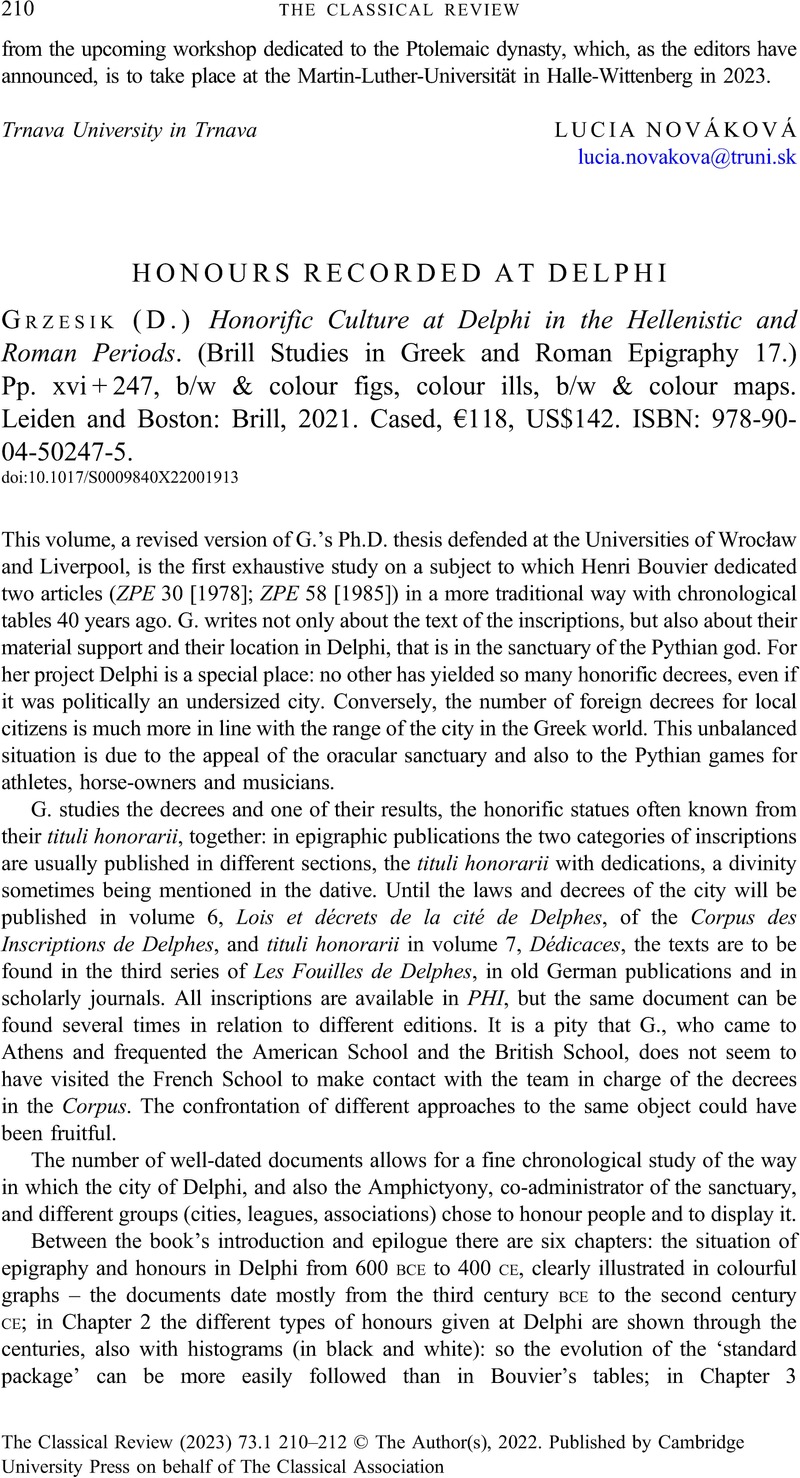No CrossRef data available.
Article contents
HONOURS RECORDED AT DELPHI - (D.) Grzesik Honorific Culture at Delphi in the Hellenistic and Roman Periods. (Brill Studies in Greek and Roman Epigraphy 17.) Pp. xvi + 247, b/w & colour figs, colour ills, b/w & colour maps. Leiden and Boston: Brill, 2021. Cased, €118, US$142. ISBN: 978-90-04-50247-5.
Review products
Published online by Cambridge University Press: 13 September 2022
Abstract

- Type
- Reviews
- Information
- Copyright
- Copyright © The Author(s), 2022. Published by Cambridge University Press on behalf of The Classical Association



